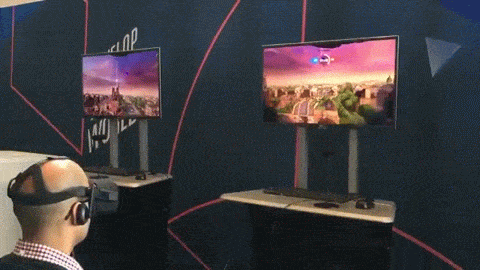ArtHands
Thinks buying more servers can fix a bad patch
https://www.youtube.com/watch?v=XzAgKgBEEAc
so basically the sharper you turn, the narrower this FOV becomes

so basically the sharper you turn, the narrower this FOV becomes

A variety of methods are being explored to grant players in VR greater freedom of movement while ensuring nobody feels any discomfort as a result of a mismatch between what the body feels and what the eyes see.
As the intensity of movement increased in the game swooping left/right or turning the field of view narrows so the player only sees a small sliver of the world. Check it out in the video above.
This is the first time weve seen Eagle Flights approach to allowing players freedom of movement in VR while reducing discomfort. Jason Rubin, head of Oculus Studios, praised the method on Twitter, saying it is incredibly effective and calling for praise of Ubisofts team.
